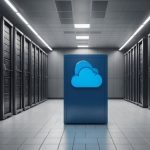The agricultural sector in the UK faces pressing challenges, yet the Internet of Things (IoT) offers transformative solutions. By integrating smart technology, agribusinesses can enhance crop monitoring, optimise resource usage, and improve yield quality. This innovative approach not only elevates productivity but also contributes to sustainable farming practices. Explore how IoT is unlocking agricultural potential and reshaping the future of UK farming.
Overview of IoT in Agriculture
IoT applications in agriculture have revolutionized the way farming is conducted, leading to the rise of precision farming and smart farming. The Internet of Things (IoT) in agriculture refers to the interconnected network of devices and sensors that collect and exchange data to optimize farming practices. This technology enables farmers to monitor crop health, soil conditions, and weather patterns in real-time, facilitating informed decision-making.
In the same genre : Unlocking Industry 4.0: Essential Strategies for UK Manufacturing Firms to Embrace Cutting-Edge Technology
Historically, the evolution of IoT technology in farming can be traced back to the early adoption of simple sensors and GPS systems. Over the past decade, advancements in connectivity and data analytics have significantly expanded the scope of IoT applications in agriculture. Today, sophisticated systems integrate drones, autonomous tractors, and AI-driven analytics to enhance productivity and sustainability.
Current Adoption in the UK
The adoption of IoT in the UK agricultural sector has seen a remarkable increase. Recent statistics indicate that approximately 20% of UK farms have implemented some form of IoT technology. This growing trend underscores the sector's shift towards more efficient and sustainable farming practices. The benefits of IoT in agriculture are evident in the improved yield quality and reduced resource wastage.
In parallel : Essential Tactics for UK Transport Firms to Optimize Fleet Management Efficiency
- Precision Farming: Utilizes data-driven insights for targeted interventions.
- Smart Farming: Integrates advanced technologies for seamless farm management.
- IoT Applications: Encompass a range of tools from soil sensors to weather stations.
In conclusion, the integration of IoT in agriculture is not only transforming traditional farming methods but also paving the way for a more resilient and efficient agricultural future.
Case Studies of IoT Implementation in UK Agribusiness
Exploring the transformative impact of IoT in UK agriculture through practical examples.
Successful IoT Applications in Crop Monitoring
In the UK, IoT case studies highlight the success of crop monitoring technologies. For instance, a notable farm in East Anglia has integrated IoT sensors to track soil moisture and nutrient levels. This system provides real-time data, allowing farmers to make precise adjustments to irrigation and fertilization. As a result, crop yields have increased by 15%, showcasing the tangible benefits of IoT in agribusiness.
Key Technologies Used:
- Soil moisture sensors
- Nutrient monitoring systems
- Real-time data analytics
Notable UK Agribusinesses Utilizing IoT
Several UK agribusinesses stand out for their innovative use of IoT. A leading example is a Yorkshire-based dairy farm that employs IoT for livestock monitoring. By using wearable devices on cattle, the farm tracks health indicators and feeding patterns, improving animal welfare and productivity. Another success story involves a Scottish potato farm using drones for aerial crop surveillance, ensuring timely interventions and reducing disease spread.
Benefits Observed:
- Enhanced livestock health
- Increased crop surveillance efficiency
- Reduced disease incidence
Lessons Learned from Implementations
Through these IoT implementations, UK agribusinesses have learned critical lessons. Firstly, the importance of data integration cannot be overstated; seamless connectivity between devices ensures comprehensive insights. Additionally, the need for skilled personnel to interpret data and maintain systems is crucial for sustained success. These experiences underline the necessity for ongoing training and investment in IoT technologies.
Key Takeaways:
- Data integration is essential
- Skilled personnel are vital
- Continuous investment is required
These IoT case studies in UK agribusiness demonstrate the potential for technology to enhance efficiency and sustainability in farming practices.
Benefits of IoT for Crop Monitoring
Exploring the transformative advantages of IoT in agriculture.
Enhanced Data Collection and Analysis
The implementation of IoT technology in agriculture significantly enhances data collection and analysis. By utilizing a network of interconnected sensors, farmers gain access to precise data on soil conditions, weather patterns, and crop health. This real-time information empowers farmers to make informed decisions that directly impact efficiency in farming. As a result, the potential for increased crop yield becomes more achievable, as farmers can tailor their interventions to the specific needs of their crops.
Real-Time Monitoring and Its Impact on Crop Health
Real-time monitoring is a cornerstone of IoT's benefits in agriculture. With continuous data flow, farmers can promptly identify issues such as pest infestations or nutrient deficiencies. This immediate insight allows for swift corrective actions, safeguarding crop health and enhancing overall productivity. The ability to monitor crops in real-time leads to resource optimization, ensuring that inputs like water and fertilizers are used effectively, reducing waste and cutting costs.
Cost Savings and Resource Optimization
One of the most compelling benefits of IoT in agriculture is the potential for cost savings. By optimizing resource use, farmers can reduce unnecessary expenditures on water, fertilizers, and pesticides. This efficiency not only lowers operational costs but also contributes to sustainable farming practices. The integration of IoT technology ensures that resources are allocated precisely where needed, minimizing environmental impact and promoting long-term agricultural sustainability.
- Key Benefits:
- Enhanced data accuracy
- Real-time problem detection
- Reduced operational costs
The use of IoT technology in crop monitoring is a game-changer for modern agriculture, offering tangible benefits that drive efficiency and sustainability.
Challenges in Implementing IoT Solutions
Navigating the complexities of integrating IoT into agriculture.
High Initial Costs and Investment Concerns
Implementing IoT solutions in agriculture presents significant challenges, particularly due to the high initial costs involved. The investment in advanced technologies, such as sensors and data analytics systems, can be a substantial barrier for many farmers. This financial hurdle is often compounded by concerns about the return on investment (ROI) and the long-term viability of these technologies. Farmers must weigh the potential benefits against the upfront expenses, which can delay or even deter adoption.
Technical Barriers and Integration with Existing Systems
The integration of IoT technology with existing agricultural systems poses another challenge. Many farms operate with legacy equipment that may not be compatible with modern IoT devices. This technical barrier requires significant modifications to existing infrastructure, which can be both time-consuming and costly. Moreover, the complexity of integrating various IoT devices into a cohesive system can lead to operational disruptions, further complicating the adoption process.
- Key Technical Challenges:
- Compatibility with legacy systems
- Complexity of integration
- Potential for operational disruptions
Data Privacy and Security Issues in IoT Applications
A critical concern in the adoption of IoT applications is the issue of data privacy and security. As IoT devices collect vast amounts of data, ensuring the protection of sensitive information becomes paramount. Farmers must navigate the risks associated with data breaches and unauthorized access, which can compromise both personal and business information. Implementing robust security measures is essential, yet it adds another layer of complexity and cost to the adoption of IoT solutions.
These implementation barriers highlight the need for careful planning and strategic investment to overcome the challenges associated with IoT adoption in agriculture.
Tools and Technologies for IoT in Agriculture
Delving into the diverse array of IoT devices and software that are transforming modern agriculture.
Overview of Available IoT Devices for Crop Monitoring
The landscape of IoT tools in agriculture is vast, offering a multitude of devices tailored for crop monitoring. These tools include smart sensors that are pivotal for collecting data on soil moisture, temperature, and nutrient levels. Such sensors provide farmers with real-time insights, enabling precise adjustments to farming practices. Additionally, drones equipped with IoT technology are increasingly popular, providing aerial views and detailed analyses of crop health. These devices are essential for implementing precision farming strategies, enhancing both productivity and sustainability.
Analysis of Popular Software Platforms for Data Management
Agricultural technology relies heavily on robust software platforms for effective data management. These platforms aggregate data from various IoT devices, providing a centralized system for analysis and decision-making. Popular software solutions offer features such as predictive analytics, which help forecast weather patterns and crop yields. Moreover, these platforms often include user-friendly interfaces, making it easier for farmers to interpret complex data. The integration of AI-driven analytics further enhances the capability of these software platforms, offering farmers actionable insights for optimizing their operations.
Comparison of Hardware Solutions for Different Crop Types
Different crop types require specialized hardware solutions to address their unique needs. For instance, IoT tools designed for vineyards may focus on monitoring humidity and sunlight exposure, whereas those for rice paddies might prioritize water level management. Below is a comparison of hardware solutions for various crops:
| Crop Type | Key Hardware Solutions | Primary Focus |
|---|---|---|
| Vineyards | Smart sensors, automated sprayers | Humidity, sunlight |
| Rice Paddies | Water level sensors, drones | Water management, pests |
| Wheat Fields | Soil moisture sensors, weather stations | Soil health, weather patterns |
This diversity in agricultural technology ensures that farmers can select the most suitable IoT devices for their specific crop needs, thereby maximizing efficiency and yield. By understanding the capabilities of different smart sensors and hardware, farmers can make informed decisions that align with their operational goals.
Future Trends in IoT and Precision Farming
Exploring the upcoming innovations and their impact on agriculture.
Emerging Technologies in IoT for Agriculture
The future of IoT in agriculture is poised for remarkable advancements. Artificial Intelligence (AI) and machine learning are at the forefront, offering new capabilities for precision agriculture. These technologies enable predictive analytics, allowing farmers to anticipate and respond to crop needs with unprecedented accuracy. For instance, AI-driven models can forecast pest outbreaks, optimizing resource allocation and reducing waste. As these innovations continue to evolve, they promise to redefine smart farming practices, enhancing both efficiency and sustainability.
The Potential of Big Data and Analytics in Farming
The integration of big data and analytics is set to revolutionize precision agriculture. By harnessing vast datasets, farmers can gain deeper insights into crop performance and environmental conditions. This data-driven approach facilitates informed decision-making, optimizing yields and improving resource management. Big data analytics also supports the development of more resilient crop varieties, tailored to withstand climate change impacts. As IoT technology advances, the ability to collect and analyze data will become increasingly sophisticated, driving the future of smart farming.
- Key Benefits:
- Enhanced decision-making
- Improved crop resilience
- Optimized resource use
Predictions for IoT Integration in the Next Decade
Looking ahead, the next decade will likely see widespread IoT integration across the UK agribusiness sector. As connectivity improves, more farms will adopt smart farming technologies, leveraging IoT to enhance productivity and sustainability. The anticipated expansion of 5G networks will further facilitate this growth, enabling real-time data exchange and remote monitoring. By 2030, it is predicted that over 50% of UK farms will utilize precision agriculture tools, reflecting a significant shift towards technologically advanced farming practices. This transformation will not only boost efficiency but also contribute to a more sustainable agricultural future.
| Emerging Trend | Impact on Agriculture |
|---|---|
| AI and Machine Learning | Predictive analytics, resource optimization |
| Big Data Analytics | Informed decision-making, crop resilience |
| 5G Network Expansion | Real-time monitoring, increased IoT adoption |
As these innovations unfold, the future of IoT in agriculture holds immense potential, promising to transform the landscape of farming through cutting-edge precision agriculture technologies.







